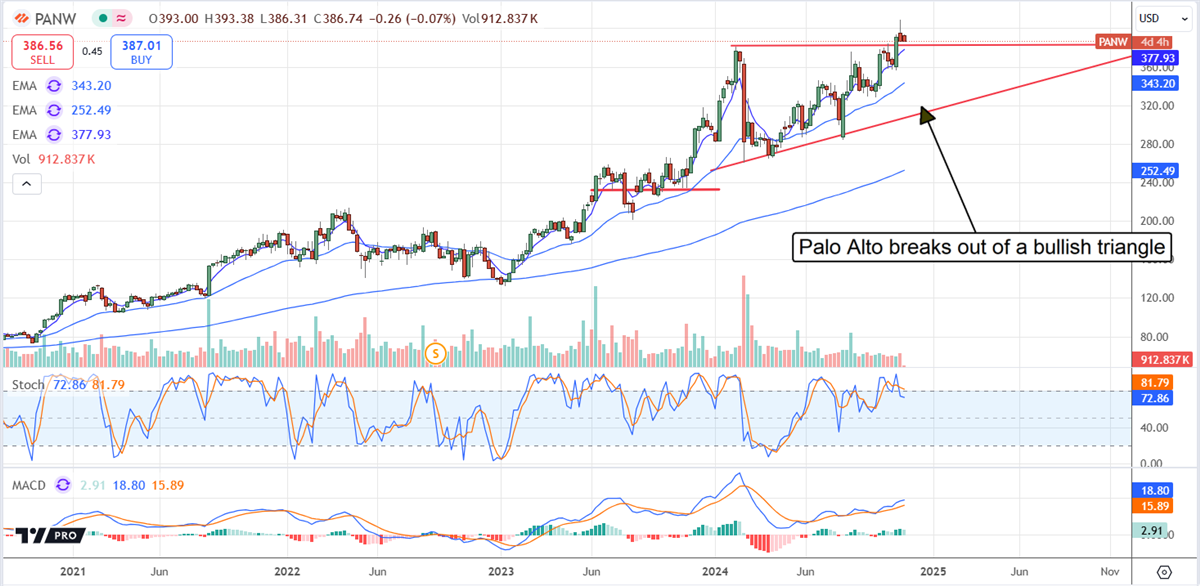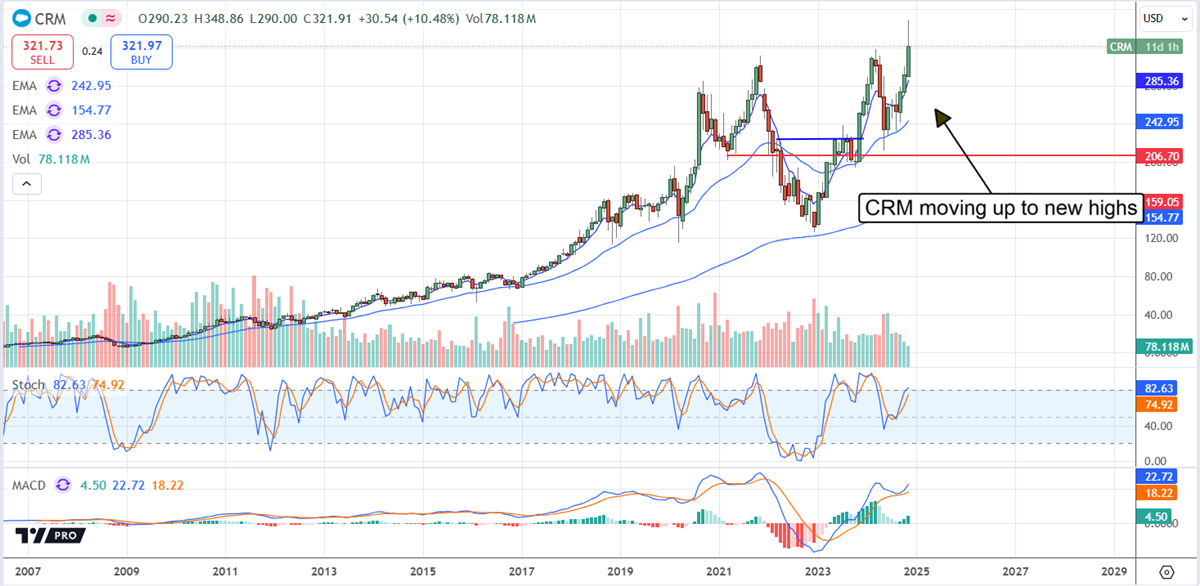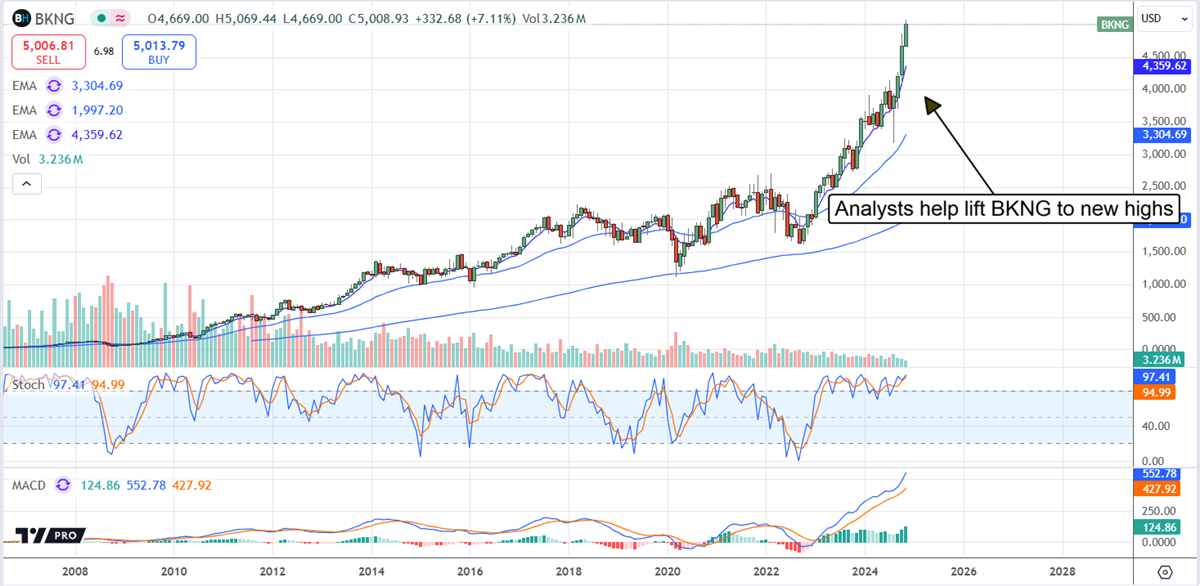 As the Super Micro Computer accounting debacle matures into a disaster, investors wonder whether it will affect Nvidia stock next.. ͏ ͏ ͏ ͏ ͏ ͏ ͏ ͏ |
| | Written by Gabriel Osorio-Mazilli 
One of the biggest debacles in the stock market is whether the technology sector will make it out alright after this quarter. Particularly, the semiconductor industry has grown to represent a larger share of the overall economy and stock market, so it makes names like Super Micro Computer Inc. (NASDAQ: SMCI) and its main supplier, NVIDIA Co. (NASDAQ: NVIDIA), carry more pressure today than ever before. As if that wasn’t enough, the two are under the spotlight for all the wrong reasons. There are rumors that the entire industry is playing a game of hot potato by rerouting orders and marking inventory suspiciously at best. However, markets still seem faithful to the possibility that these accusations won’t be here for longer or won’t materialize enough to send the stock down. Investors can see this conclusion by how Super Micro Computer has rallied by over 28% in a single day, the day after it met its deadline with the NASDAQ exchange to avoid de-listing, after submitting its new compliance program and hiring a new auditor, it looks like the company may be in the clear for now, but is it out of the woods yet? There is no clear answer, but there are better ways to ask the question, and these may also spill over to affect NVIDIA stock this week. Accounting Challenges Pose Significant Risks for Super Micro Computer Stock in Upcoming Quarters The top and bottom lines for Super Micro Computer stock look great. Revenues reached up to $5.3 billion in the latest quarterly earnings results, a jump of 143% from the same quarter last year. With this growth, investors could explore the financials to find more growth. Net income was $352 million, up from $193.6 million a year ago. However, here’s where the image starts to shift away from reasons to celebrate and into reasons to worry. The number of outstanding shares increased by 8 million during the 12-month period, which should raise red flags for investors everywhere. If the business generated up to $352 million in net income, why would management have to issue more stock and raise money for operations? This discrepancy usually leads investors down a rabbit hole to the conclusion of suspicious activity and overstating earnings. Without going into the rabbit hole, the cash flow statement can act as another great gauge and time saver to find all the answers investors seek. The operating cash flow figures will settle all doubts. Super Micro Computer reported a net outflow of $2.5 billion for the quarter. Two things seem to be wrong with the business. There was positive net income, but there was still a need to raise cash by issuing stock. Then, the cash flow statement shows a net outflow (loss) significantly different from the reported net income, so the business burned $2.5 billion, hence the need to raise capital. More than that, the company’s accountancy team from Ernst & Young resigned ahead of the due date for quarterly earnings filings, which should raise another red flag for investors. Super Micro Computer has replaced its accountancy team with those from BDO USA as its new independent auditor. The problem is that regulators have already flagged and fined BDO for breaking rules in the past. So, by connecting the dots, investors can see the issues boiling in Super Micro Computer stock. They overstated their earnings, forced their accountants to leave, and now hired an independent auditor with a criminal past. How Super Micro Computer's Issues Could Impact NVIDIA Stock Performance Now, the other issue becomes whether NVIDIA will be affected, considering that Super Micro Computer represents up to 9% of NVIDIA’s revenue. The connection is very clear: if Super Micro Computer overstated its inventory and sales, then NVIDIA most likely also overstated its own numbers. Checking in for the same discrepancies as in Super Micro Computer, NVIDIA does have a better profile, making it a somewhat safer subject in this debacle. According to NVIDIA’s latest quarterly figures, investors can deduce the following: NVIDIA generated up to $16.6 billion in net income and, at the same time, actually bought back stock to retire up to 200,000 shares off the open market. That makes more sense, as the story looks like the business made money this quarter, unlike Super Micro Computer. Looking into the cash flow statement, NVIDIA’s operating cash flows show a net inflow of $14.5 billion, which reiterates the profit shown in the income statement. Due to the timing of inventory and sales, a healthy margin of $2 billion exists between the two. That’s an entirely different picture and story than Super Micro Computer’s today, and hence why there could be a dip in NVIDIA stock when and if Super Micro gets into trouble, but now investors know that this is a dip that could be bought.  Read This Story Online Read This Story Online | As we step into 2025, artificial intelligence (AI) stocks continue to dominate headlines, and now is the perfect moment to position yourself for the coming year's potential.
Our latest research has uncovered two must-buy AI stocks currently trading under $10/share – an affordable entry with promising growth potential. These stocks are flying under the radar, but it's only a matter of time before they gain mainstream attention. 👉 Click here to access your FREE report now! |
| Written by Gabriel Osorio-Mazilli 
After a few months of lackluster price action in the energy sector, most investors have shied away from some of the best names in the sector, especially those in the crude oil industry. Whether the news about the current oil demand makes sense or not, investors need to think of the energy space as one of the most under-owned market corners today. Even Paul Tudor Jones said in a recent CNBC interview that commodities today are severely under-owned. Judging by the price action in other commodities, investors can safely deduce that oil has the most upside, given how low it has traded over the recent quarters. However, this doesn’t mean all oil names are good buys right away. There are those that hold oil, and there are those that help produce oil. Given how low production is today as a result of falling inflation, investors should look into those that already hold oil. This is why Warren Buffett decided to buy up to 29% of Occidental Petroleum Co. (NYSE: OXY) and why investors can look to giant Exxon Mobil Co. (NYSE: XOM). For diversification in the value chain, investors can then consider the Energy Select Sector SPDR Fund (NYSEARCA: XLE). Why Occidental Petroleum Earned Warren Buffett’s Seal of Approval Investors need to first understand the two main pillars of Warren Buffett’s strategy so that they can reverse engineer why he picked Occidental Petroleum stock out of all the choices in the sector. His main objective is to find companies with high profitability and, secondarily, those that trade at an attractive enough discount to make them a Buy. Occidental Petroleum’s profitability can be judged primarily by its gross margins, which were as high as 61.8% as of the past 12 months. This high capital retention from each sale allows management to operate efficiently enough to maintain a net income margin of 16.3%. That’s the foundation for capital flows, but then management needs to take that bottom line and attempt to reinvest it into the business to activate the compounding wealth effects of a profitable business. The answer to this is found in a company’s return on invested capital (ROIC) rates, where Occidental Petroleum brings in a high of 17.7%. When it comes to the pricing of the stock, the main value comes from the current price-to-book (P/B) multiple of 2.0x compared to the rest of the energy sector’s average 3.7x valuation today. The mix of high profits and discounts may have driven analysts from Raymond James to place a $77 price target on the stock, calling for up to 51.3% upside. How Exxon Mobil’s Scale Drives Its Upside in Cycle Recovery Now that oil prices are rallying by over 3% this week, investors can look to the biggest names in the space to get their potential investment dollars over the line. Considering Exxon Mobil’s $523.6 billion market capitalization and international sales exposure, this is one stock to consider as the business cycle starts to shift upward. With the United States Federal Reserve (the Fed) starting to cut interest rates again and other central banks worldwide following the same path, the business cycle for the world’s biggest economies will probably bottom and shift back to expansion. Whenever this happens, demand for oil follows, and that’s why Exxon Mobil is back in play. Knowing that scale and reach will be major advantages in the coming cycle for oil, analysts at Scotiabank decided to boost their ratings to Sector Outperform coupled with a price target of $145 a share in Exxon Mobil. This means the stock would have to stage a rally as big as 21.5% from where it trades today. A double-digit upside in a company this big isn’t common, so the fact that analysts are willing to place these targets as the stock already trades at 95% of its 52-week high amplifies the importance of these current analyst views. How The XLE ETF Provides a Safety Net Against Oil Market Volatility Exxon and Chevron Co. (NYSE: CVX) are the largest Energy Select Sector SPDR Fund holdings. However, there’s also a sense of diversification through the oil value chain to still give investors the possibility of upside apart from an average performance inherent in an ETF. Because of these features, more institutional buyers have justified expanding their positions in this ETF, particularly those from Hamilton Capital, who recently boosted their holdings by 5.7% as of November 2024. This new allocation brought the group’s net investment up to $297.5 million today, giving investors another reason to lean into the sector. Ultimately, when and if oil prices go higher, they’ll be synonymous with higher inflation, and that’s where this ETF and its dividend come into play. Today, shareholders are offered a $3.22 a share payout, which translates to an annualized dividend yield of up to 3.4% to outpace inflation rates today.  Read This Story Online Read This Story Online | |
| Written by Thomas Hughes 
Like they say, the trend is your friend, and it's best to trade with your friend. Stocks like Palo Alto Networks (NASDAQ: PANW), Salesforce (NYSE: CRM), and Booking Holdings (NASDAQ: BKNG) are trending higher and are forecasted to provide friendly returns this year and next. Trends that support their price action include growth, outperformance, cash flow, and outlook for growth and cash flow growth to continue. Trends supporting their price action also include the analysts, who are bullish and lifting their price targets. The average forecasted gain is a solid double-digit advance and likely a low forecast because of each company’s industry-leading position and operational quality. Palo Alto Analysts Shift Gears: Lift Targets to New Highs Palo Alto analysts did a head fake in 2024, downgrading sentiment, lowering their price targets, and then quickly reverting to the trend. The trend is upward and includes a price target that is up 40% over the last year and rising in the wake of the CQ3 2024 earnings report. The consensus stock price target assumes fair value with the stock trading at a critical support level, but the revision trend suggests a move to the high-end range is coming. That would put the stock near $455 and in alignment with the technical targets. The technical targets put the stock in the range of $450 to $500 in 2025 and above $600 towards the end of 2026. The analysts' head-fake was caused by platformization. Palo Alto is the leading cyber security provider, but its cyber security portfolio was fractured. Platformization is intended to make it easier to use and resonate with clients. The plan is working so well that an expected temporary slowdown in growth and impact on profitability is much less than feared, and now the company is set up to sustain mid-teens growth in 2024 and the long term. The drivers for Palo Alto’s growth are widening business digitization and accelerating cyber threats. The rise of AI is accelerating cyber-attacks, increasing the frequency, time, and cost of mitigating them. 
Salesforce is a Force to be Reckoned With Salesforce is among the earliest adopters of AI, having integrated machine learning and data mining into its platform from the start. In 2024, growth is slowing but not as rapidly as forecasted, and margins are widening, strengthening the already robust cash flow and improving shareholder value and the capital return outlook. Salesforce’s capital return includes dividends, which are a token amount but are on track for significant increases over the coming years, and share buybacks. The company pays out only 8.5% of 2024’s consensus forecast for a yield near 0.5% with shares near $3.25; the buybacks are worth 10X the dividend in dollars and reduced the count by 0.5% at the end of FQ3. MarketBeat.com tracks 38 analysts covering Salesforce. They show a high conviction in the Moderate Buy rating and are lifting their price targets in 2024. Like with Palo Alto Networks, the consensus target assumes fair value near current trading levels. However, the revision trend is positive and suggests a move above the consensus is likely. The high-end range puts this market near $400 or 25% above the critical support target. 
Booking Holdings: Slowing Growth Offset by Outperformance and Quality Booking Holdings is another stock whose share price experienced headwinds because of an expectation for slowing growth. It is also experiencing tailwinds in late 2024 because the slowdown is less than feared, and operational quality is high. Results in 2024 include growth slowing into the high-single-digit range and outperforming by a wide margin. Margin is an area of strength, with the adjusted EPS growing at double the pace. The outlook for 2025 is for similar performance, and the consensus figures are likely low. The combination of easing interest rates and a business-friendly president will likely create business tailwinds in the back half of the year. MarketBeat tracks 32 analysts who rate this stock as a Moderate Buy. They see it fairly valued with a consensus of $4750, but the trend is positive, and the figure is rising. The most recent targets have this stock trading near $5550, or about 10% above all-time highs near $5000. 
 Read This Story Online Read This Story Online | |
| More Stories |
| |
|
The latest ProsperityPub Q&A is here! View in browser View in browser NOVEMBER 19, 2024 ...

-
Earnings Highlights: RY, LOW, BMO, SJM, AZO, BNS, BSY, Projections - See Details Inside! ͏ ͏ ͏ ͏ ͏ ͏ ͏ ͏ ͏ ͏ ͏ ͏ ͏ ͏ ͏ ͏ ͏ ...
-
New Dividends from AAON, Jack Henry & Associates, Skyworks Solutions, Churchill Downs, Nasdaq, Woodward, PACCAR and more... Unsubscribe ...
-
Insider Trades for First Citizens BancShares, T-Mobile US, GigaCloud Technology, Amkor Technology, Ardelyx, Cytokinetics and more... ...
|

No comments:
Post a Comment